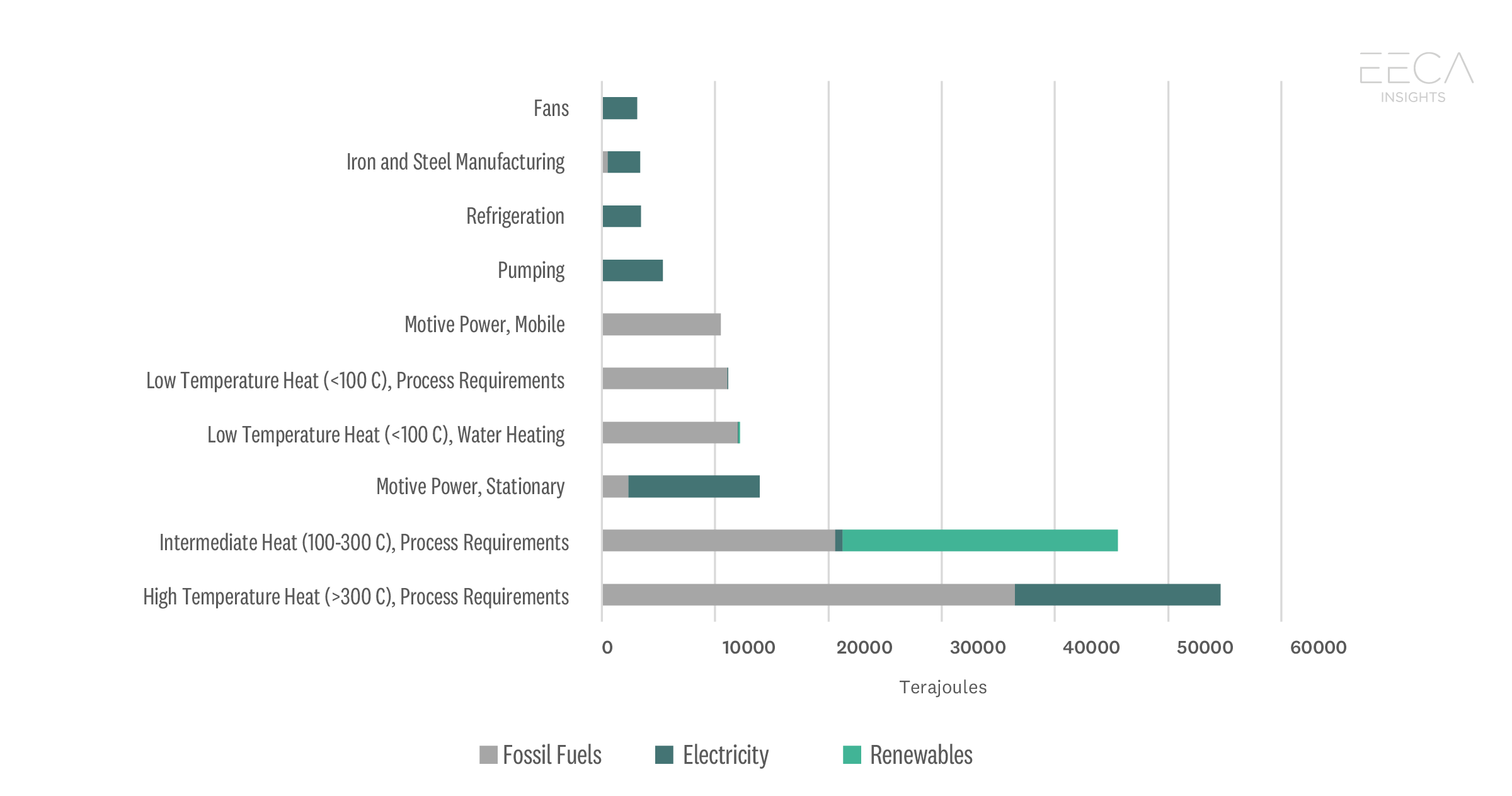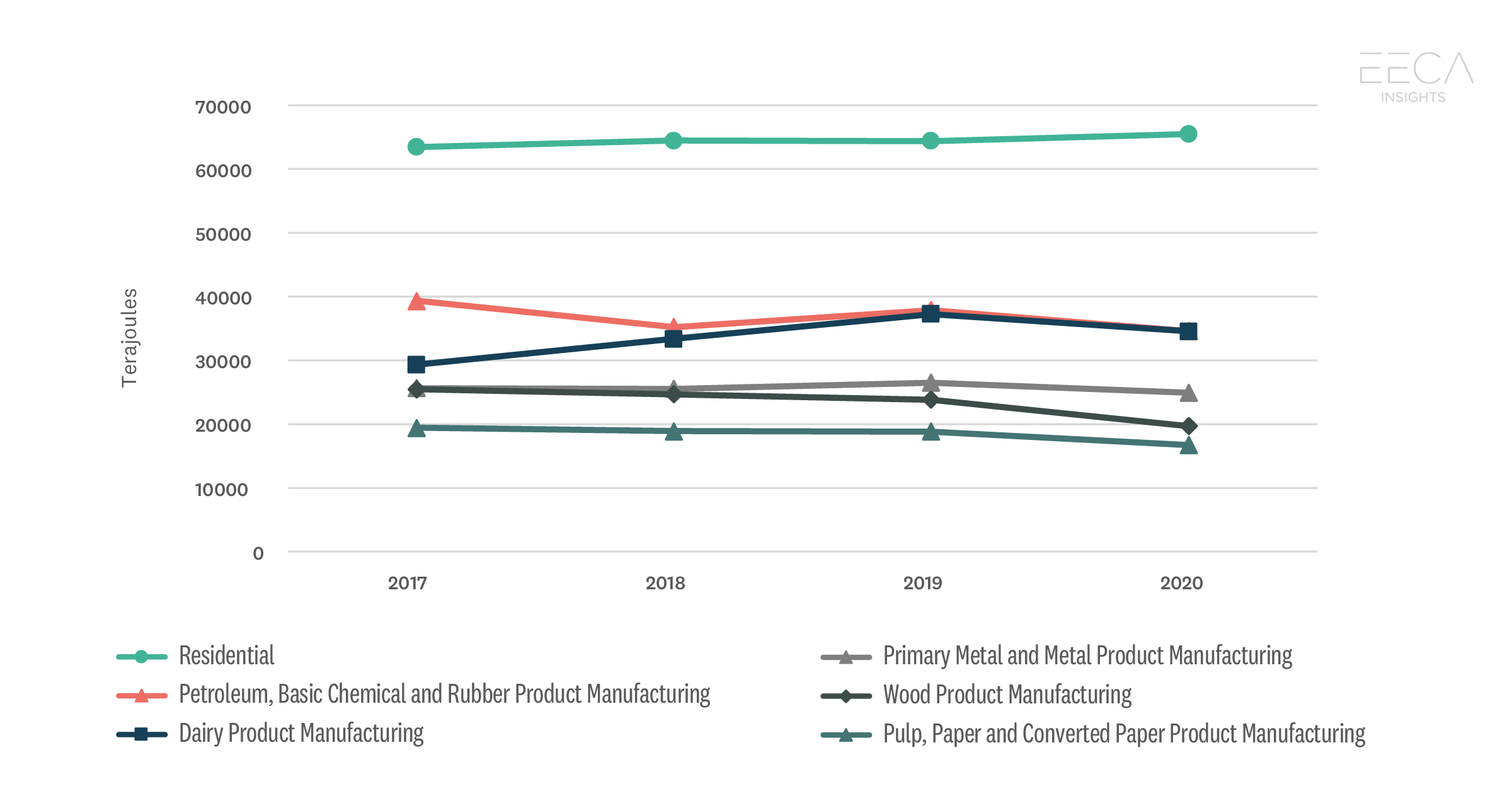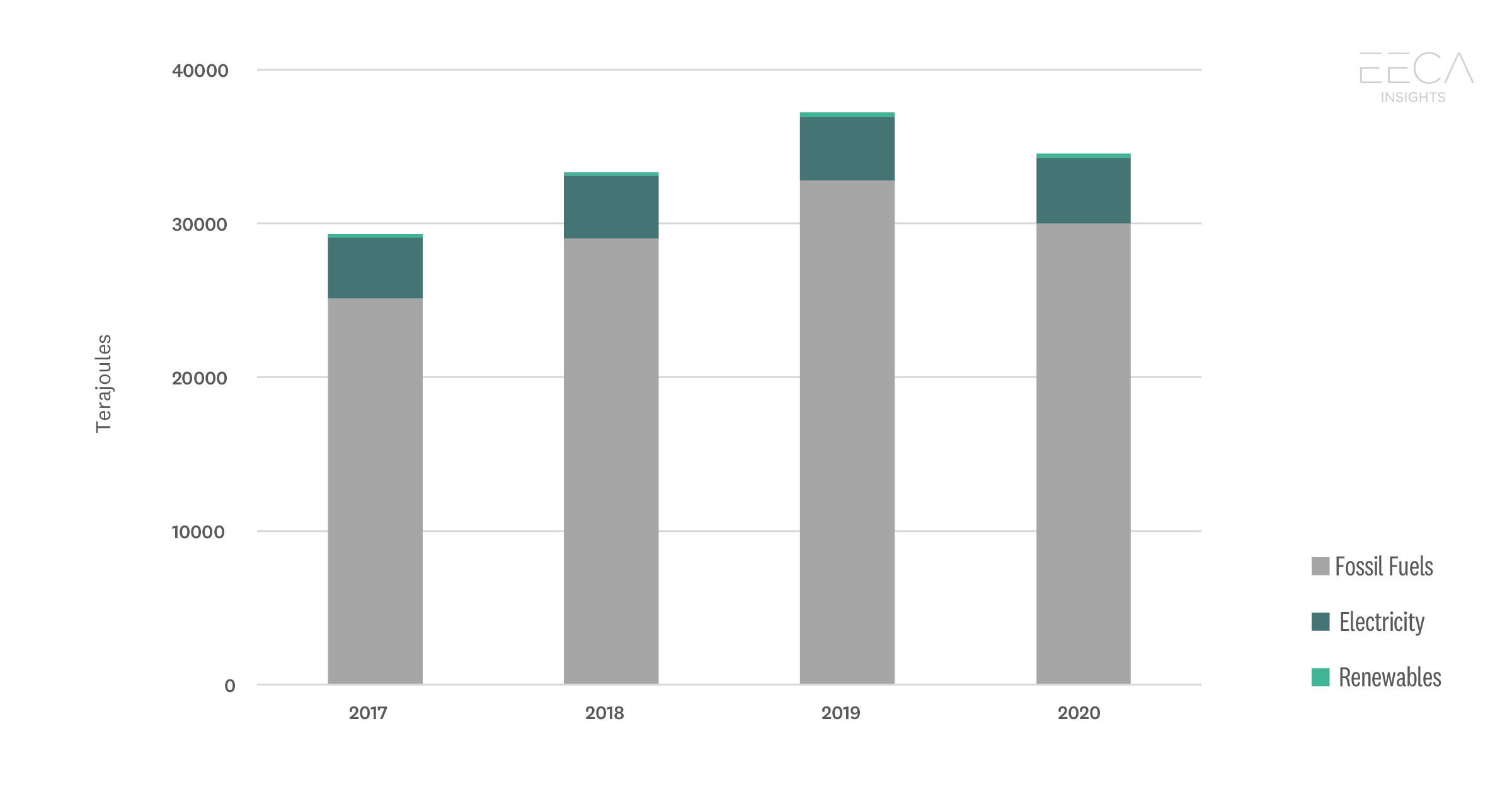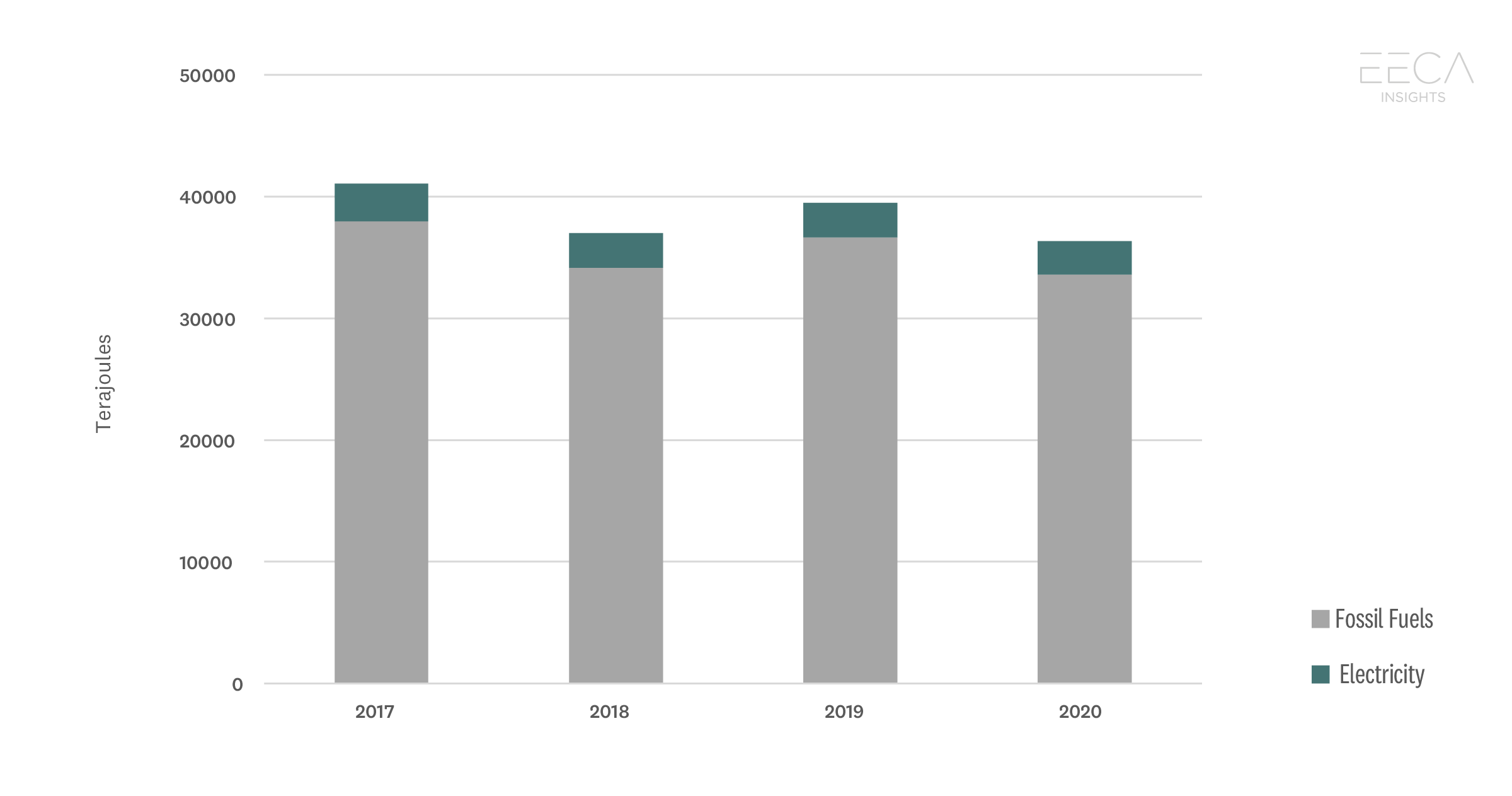An updated EECA database gives the latest data on New Zealand’s use of fossil fuel and shows how the country’s transition to low-carbon energy is tracking.
EECA has updated its Energy End Use Database (EEUD) with 2020 (calendar year) figures, providing four years of information in a new online open data visualisation tool and a downloadable spreadsheet of the entire dataset.
Manager of Evidence Insights and Innovation Kate Kolich says the data shows fossil fuel use for energy continues to dominate key industrial sectors, and in New Zealand’s overall energy profile in general. Renewables, mainly in the form of wood and geothermal, are used significantly in the wood, pulp and paper sectors.
“The transition away from fossil fuel use is underway but EECA’s latest data shows there is a considerable way to go.”
Petrochemical manufacturing, dairy product manufacturing, and the primary metals sectors are New Zealand’s largest energy consuming industrial sectors, making up 30% of total stationary (excludes transport) energy consumption in New Zealand and 56% of stationary energy consumption in industry.
Kate Kolich says the EEUD open data visualisation tool enables researchers, policy makers and members of the public to explore how energy is used by fuel type, sectors, end uses and technologies.
“This data supports agencies and businesses make informed decisions around energy use and puts a spotlight on areas where New Zealand needs to prioritise energy efficiency and renewable energy to enable decarbonisation across sectors.”
Kate Kolich says estimates are based on MBIE’s annual high-level sector/fuel energy demand data, which is then proportioned into further disaggregated sectors, end use applications and technology values.
“The new interactive EEUD data visualisation tool provides a way to visualise the connections between energy sources and end use technology, by enabling users to view outputs from the database with interactive data charts.”
Access the Energy End Use Database visualisation tool at www.eeca.govt.nz/eeud
2020 energy use by application
High and intermediate temperature process heat requirements in manufacturing dominate, making up 32% of total stationary energy consumption.
2020 - Top 10 End Uses – Stationary Energy Consumption

Key changes between 2017 and 2020
There was about a 7% drop in energy consumption across New Zealand from 2019 to 2020, due to the April 2020 Covid-19 lockdown. The 2020 dip is reflected in most business sectors and can be seen in the top five stationary energy consumption sectors. This is contrasted with the residential sector, which has a slight increase (around 2%) from 2019 to 2020.
Top 5 Business Sectors and Residential Sector – Stationary Energy Consumption

Selected sector insights
Dairy Product Manufacturing accounts for 11% of all non-transport related energy use.
The dairy product manufacturing sector is one of the largest energy-using sectors in New Zealand, accounting for around 11% of all stationary energy use in 2020. In 2020 total consumption dipped slightly in line with most business sectors. Coal and natural gas dominate the sector’s fuel profile, accounting for 85% of total stationary energy in 2020. Process heat was the primary end use application, accounting for 62% of total stationary energy used.
Dairy Product Manufacturing – Stationary Energy Consumption

The petrochemical product manufacturing sector is another large energy-using sector in New Zealand.
It also accounted for around 11% of all stationary energy use in 2020. In 2018 energy consumption dipped due to outages which constrained production in the second half of the year. In 2020 consumption dipped again due to the April 2020 Covid lockdown period, global price reductions and gas supply reductions. Natural gas dominates the sector’s fuel profile, accounting for 87% of total stationary energy in 2020. High temperature process heat was the primary end use application, accounting for 83% of total stationary energy used.
Petrochemical Product Manufacturing – Stationary Energy Consumption

Related Links
Find out more about the Energy End Use Database
Note to Editors
EECA is the government agency that works to improve the energy efficiency of New Zealand's homes and businesses and encourages the uptake of renewable energy.
Our purpose is to mobilise New Zealanders to be world leaders in clean and clever energy use.
